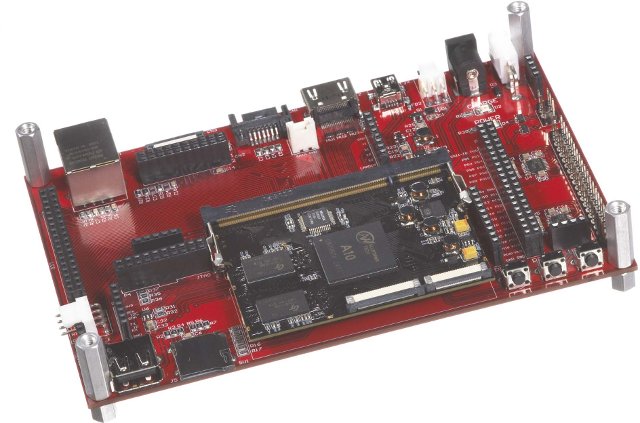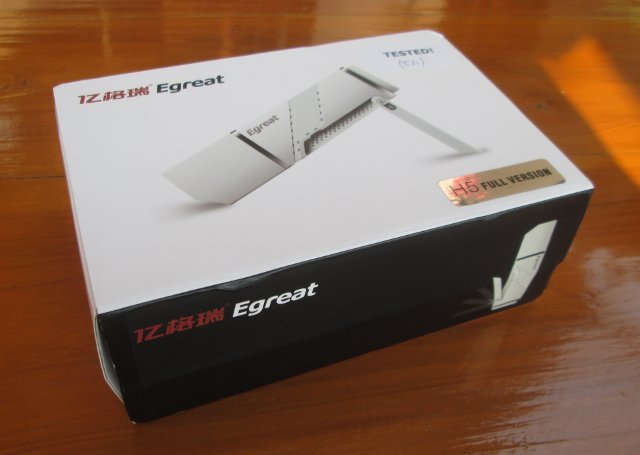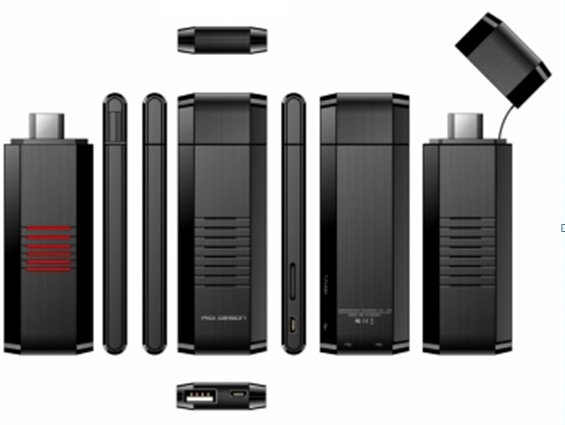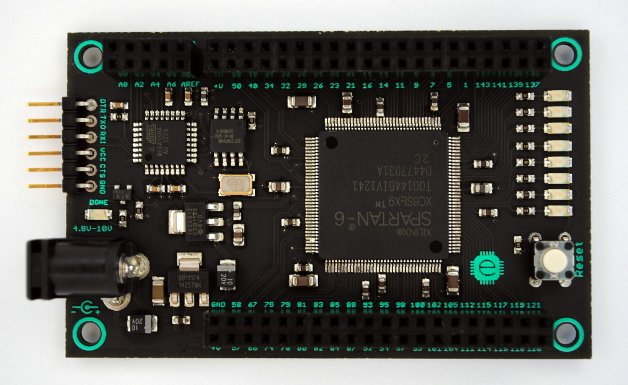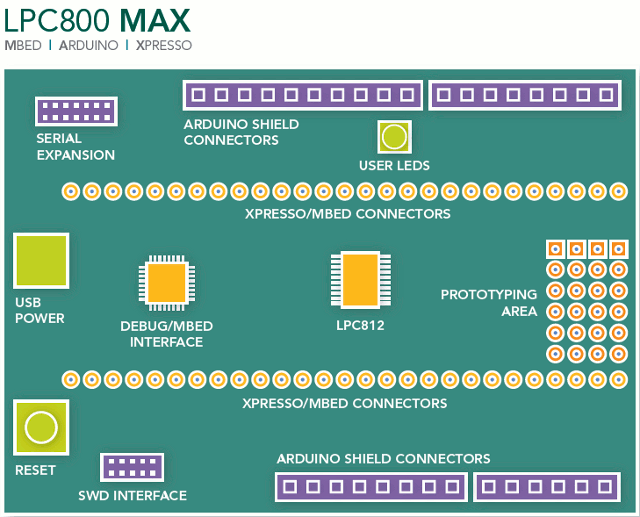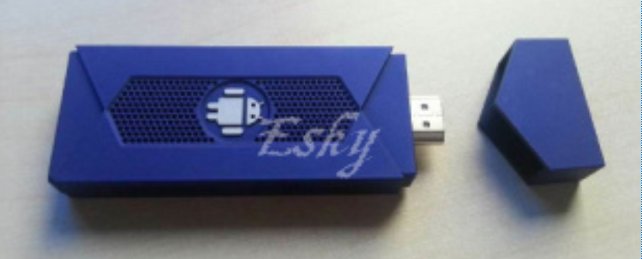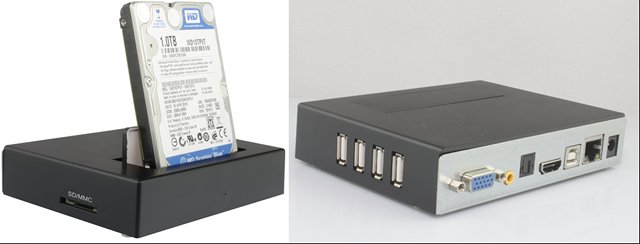BDD Group (Black Dragon Development Group), a US based technology startup, has recently announced an AllWinner A10 Computer-on Module (CoM) targeting the industrial embedded market with support for Linux, Android and WinCE operating systems. The company did not provide complete specifications for the CoM/SoM, and they basically listed A10 specifications and added an RTC: SoC – AllWinner A10 ARM Cortex-A8 CPU + Mali-400 GPU VPU – Support for 2160P video decoding, 3D video decoding, various codecs such as VP8, AVS, H. 264 MVC, VC-1, MPEG-1,2,4, etc, and H.264 HP video encoding up to 1080p @ 30 fps or dual-channel 720p @ 30 fps. Display Multi-channel HD display Integrated HDMI 1.4 YPbPr, CVBS, VGA Multiple LCD interfaces, including CPU, RGB, LVDS up to Full HD Memory 32-bit DDR2/DDR3 up to 2GB SLC/MLC/TLC/DDR NAND up to 64 GB Boot Devices – NAND Flash, SPI NOR Flash, SD Card,USB RTC – Real time […]
Giayee TV BOX101 Looks Like a Nexus Q Clone
Last summer Google launched the Nexus Q a set-top box which main features were its rounded shape and ridiculously high price. Google eventually dropped the product, but at least one Chinese company called Giayee believes in the concept and launched TV BOX101 which just looks like the Nexus Q internally, but instead of OMAP4460, it’s powered by Rockchip RK3066. Here are some preliminary specifications of the device: SoC – Rockchip RK3066 Dual core A9 @ 1.6GHz + Quad Mali-400 GPU System Memory 1G DDR3 RAM Storage – 8G NAND Flash + micro SD slot Video Out – HDMI + AV Connectivity: Ethernet – 10/100M Wifi – 802.11 b/g/n USB – 2x USB Host Size – Diameter 117mm, Height 108.5mm Weight: 363g Air Mouse Control Wireless Microphone Somatic Joypad Customized UI This Android 4.1 device will come with an “Air Mouse Controller”, an HDMI cable, a power supply (5V/3A), and a […]
Review of Egreat H5 mini PC Powered by Nufront NS115
W2COMP sent me a new toy to play with: Egreat H5 mini PC built around Nufront NS115 dual core Cortex A9 SoC with 1GB RAM and 4GB Flash, and (theoretically) running Android Jelly Bean (4.1). Since it’s the first time I write about this device, let’s start with the specifications as shown in W2COMP: SoC – Nufront NS115 dual core Cortex A9 @ 1.0GHz + Mali-400 GPU System Memory – 1GB DDR3 Storage – 4GB Nand Flash (2 GB for OS, 2GB available space) + micro SD slot. Video Output – HDMI (720p / 180p) Video Containers- AVI, RMVB, MKV& FLV Audio Codec – Dolby, DTS, Dolby Digital Plus, Dolby True HD, PCM (DTS-HD MA, RAW not supported), MP3, WMA, AAC, FLAC and OGG Connectivity – Built-in WI-FI 802.11 b/g/n USB – 1x USB host port, 1x micro USB Misc – 1 IR port Power – 5V/2A Dimensions – 122 […]
CloudnetGo CR9 is an HDMI TV Stick Based on Rockchip RK3188 Quad Core SoC
Rockchip RK3066 based mini PCs are clearly the most popular in the market, and after the discovery of one AllWinner A20 HDMI dongle, and one AllWinner A31 mini PC earlier this week, it’s time for the first mini PC based on Rockchip R3188 quad core Cortex A9 processor called CloudnetGo CR9. Here are ClounetGo CR9 specifications: SoC – Rockchip RK3188 quad core Cortex A9 @ 1.8Ghz + Mali-400MP4 GPU System Memory – 2GB DDR3 Storage – 8 to 16GB internal flash + micro SD slot (up to 32GB) Connectivity – Wi-Fi 802.11 b/g/n Video Output – HDMI (male) up to 2160p Video Codecs – VP8, AVS, MJPEG, RV8/9/10, H.263, H.264, VC-1, MPEG-2, MPEG-4, DIVX Video Container Formats – AVI, RM, RMVB, PMP, FLV, MP4, M4V, VOB, WMV, 3GP, MKV, ASF, 3G2M4V. Audio Codecs/Formats – MP1/2/3, WMA, OGG, AAC, M4A, FLAC, APE, AMR, RA, WAV. USB – 1x USB Host 2.0, […]
The Mojo – $65 FPGA Development Board Powered By Xilinx Spartan 6
Embedded Micro has started a kickstarter campaign to fund an FPGA board called “the Mojo”, “designed to be user friendly and a great introduction into digital design”. The board is powered by a Xilinx Spartan 6 FPGA that comes with over 9,000 logic cells, and will allow you to design digital circuits composed of a bunch of logic and, or, nor, etc… gates connected together to perform a specific task. Here are the features of “The Mojo”: Spartan 6 XC6SLX9 FPGA – 9,152 logic cells for your largest designs 84 general purpose digital IO pins (3.3V logic level) 8 analog inputs 8 user controlled LEDs A USB connection (new revision) to configure the FPGA and send receive data from your design On board voltage regulation (4.5V – 12V input, 3.3V and 1.2V outputs) 8 MHz on-board clock (can be multiplied internally by the FPGA) A reset button to be used in your designs […]
NXP LPC800-MAX Development Board Combines mbed, LPCXpresso and Arduino Connectivity
NXP unveiled LPC810 & LPC812 Cortex M0+ MCUs in November 2012, and more recently at Embedded World 2013, the company announced LPC810 and LPC812 microcontrollers availability together with LPC800-MAX, a development board based on NXP LPC812 compatible with mbed, Arduino and LPCXpresso headers which will be released in April 2013. LPC800-MAX board features: MCU – LPC812 Cortex M0+ in TSSOP20 package Onchip memory – 4KB SRAM and 16KB Flash. On-board debug interface (mbed USB onboard interface) on a LPC11U35 Top of board has Arduino compatible connectors, bottom of board has mbed and LPCXpresso connectors. Routing configurable via Switch Matrix. 3 color user LED, same one as on the LPC800 Xpresso A PCF8591 I2C ADC, mainly intended for use with the Arduino connectors 14-pin Serial Expansion Interface Connector compatible with several expansion modules from Embedded Artists 10-pin SWD connector for optional external debug probe User prototyping area This USB powered board will […]
UNUIGA U28 Android 4.1 mini PC Powered by AllWinner A31
I wrote about AllWinner A20 mini PC and media players yesterday, but Gabe, a regular reader and commenter, informed me that at least one quad core Cortex A7 mini PC is now available. UNUIGA U28 HDMI TV dongle is powered by AllWinner A31 SoC, and comes with 2GB RAM, and 8GB flash, as well as U03 wireless keyboard. The device sells for $101 including shipping in a new (without any feedback) shop in Aliexpress. Here are the specifications of this AllWinner A31 HDMI TV dongle: SoC – AllWinner A31 quad core Cortex A7 + PowerVR SGX544MP2 GPU System Memory – 2GB DDR3 RAM Storage – 8GB NAND Flash + microSD Connectivity – WiFi 802.11b/g/n + Bluetooth 2.1 USB – 1x USB 2.0 host port, 2x mini USB ports Video Output – HDMI Video Codecs – Mpeg1/2/4.H.264,VC-1,Divx,Xvid,RM8/9/10,VP6 Video Container Formats – MKV, TS, TP, M2TS, RM/RMVB, BD-ISO, AVI, MPG, VOB, DAT, ASF, […]
Cloudsto AllWinner A20 Android 4.2 mini PC and Set-top Boxes
AllWinner A20 is a dual core Cortex A7 processor destined to provide an easy pin-to-pin compatible upgrade for AllWinner A10 devices, and the first devices start to appear on the market with several Cloudsto offerings running the latest Android 4.2 Jelly Bean: A20 Media Stick – AllWinner A20 mini PC with 1GB RAM, 4GB Flash, HDMI output, 2x USB Ports and IR receiver. Price: 59.99 GBP ($90.88 US) A20 Media PC – AllWinner A20 set-top box with 1GB RAM, 4GB NAND Flash, onboard Ethernet, HDMI + RCA Video output, Optical output, and 2 x USB Ports. Price: 84.99 GBP ($128.77 US) Cloudsto Media PC PRO DRIVEDOCK – AllWinner A20 set-top box with 1GB RAM, 4 GB Flash, a 2.5″ SATA Hard Drive Bay, HDMI, VGA, and RCA video output and more. Price: 94.99 GBP ($143.92 US) The Media PC PRO DRIVESTOCK is the star of the show, and just looks […]


